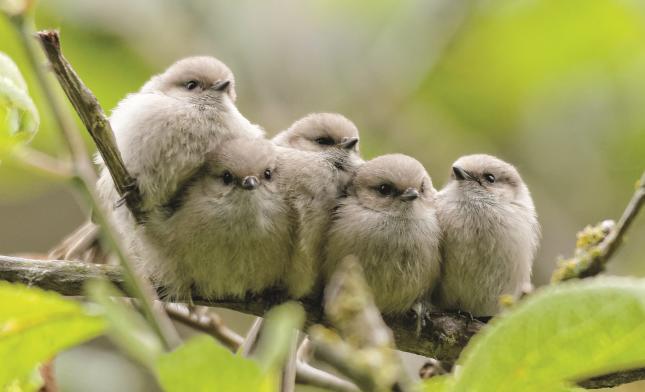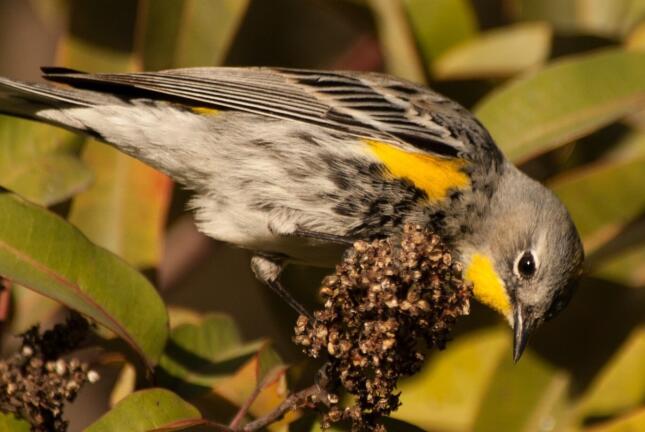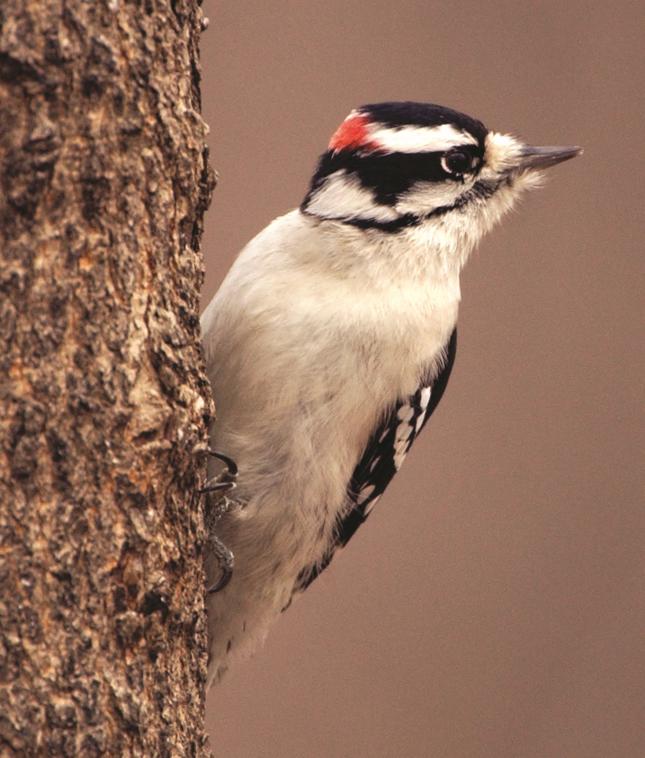January: Birds Want Suet
 You may not see them. The only clues may be a slight rustling in a bush and a flurry of little chirps. It's winter and likely your yard has been invaded by a busy little flock of Bushtits. Tiny, gray and almost invisible, they are tough little survivors who do whatever is necessary to survive cold nights. When temperatures here dip into the 40s, they sometimes cuddle in the densest parts of bushes. You can help by putting out suet, a Bushtit favorite, to give them the calories to survive the cold.
You may not see them. The only clues may be a slight rustling in a bush and a flurry of little chirps. It's winter and likely your yard has been invaded by a busy little flock of Bushtits. Tiny, gray and almost invisible, they are tough little survivors who do whatever is necessary to survive cold nights. When temperatures here dip into the 40s, they sometimes cuddle in the densest parts of bushes. You can help by putting out suet, a Bushtit favorite, to give them the calories to survive the cold.
Right: Like their parents, five baby Bushtits huddle on a branch
Project FeederWatch continues through April. It's easy to participate in this important citizen-science project. Just visit the web site, feederwatch.org, and sign up.
 Of course you want to see bright Yellow-rumped Warblers flitting around your yard, brining color and life., To be sure to bring them in, add mealworms near your water source. As an extra treat for the winter and to keep them around, and suet feeders.
Of course you want to see bright Yellow-rumped Warblers flitting around your yard, brining color and life., To be sure to bring them in, add mealworms near your water source. As an extra treat for the winter and to keep them around, and suet feeders.
Left: A Yellow-Rumped Warbler tries to find bugs on a bush at the LA Zoo (Larry Naylor)
As cooler weather sets in, the Goldfinch population peaks. Their natural food sources have been picked clean, and they need new sources of their favorite seeds, nyjer and sunflower. Keep your nyjer feeders full and add some sunflower chips to the mix.
Bald Eagle watchers are keeping their eyes on the local nests as egg-laying begins at Big Bear, and on Catalina and the Channel Islands. Hatches won't happen until February, but the eggcitement is building for new eaglets on Youtube.
 They are our smallest woodpecker, but that doesn't stop Downy Woodpeckers from making a din as they drum and drill looking for grubs and other bugs in the trees. Eventually they will make a cavity that they can use for a nest when spring comes. The acrobatic Downy Woodpeckers will jump from twig to twig or even hang upside down to get at any bugs on a tree.
They are our smallest woodpecker, but that doesn't stop Downy Woodpeckers from making a din as they drum and drill looking for grubs and other bugs in the trees. Eventually they will make a cavity that they can use for a nest when spring comes. The acrobatic Downy Woodpeckers will jump from twig to twig or even hang upside down to get at any bugs on a tree.
Right: A Downy Woodpecker takes a break from drilling
Suet also is a draw for Woodpeckers and Nuthatches, as well as other smaller birds that need the extra calories.
Though it seems like a quiet time for Hummingbirds, in fact the local Anna's and Allen's often have their first clutch of eggs in January. The little flyers develop quickly, fledging about 21 days after they hatch. Keep feeders full and clean, as the busy mothers need even more nectar in the cold..
Watch any big trees that are close to the coast, because January is when Great Blue and other herons and egrets begin nesting. They build large stick nests that sometimes seem perched precariously, but seem to suit these large birds anyway.
January is the time of an exciting weekend of bird watching and educational sessions at the Morro Bay Birding Festival. Dubbing itself "Where world-class birding meets small-town hospitality, the festival is a friendly weekend crowded with events for bird lovers.

